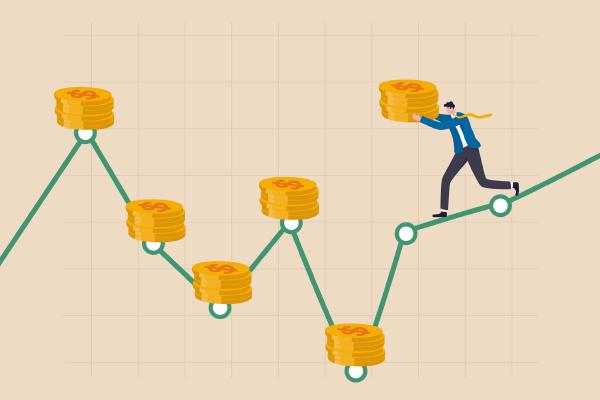fundamentals

Introduction
Staking and masternodes are the cornerstones of the functioning of blockchains based on proof-of-stake. They are the two main vectors of passive income in the new finance of crypto-assets. Staking / Masternodes, what is it? The masternodes A masternode is a server holding a complete copy of the blockchain and whose purpose is to provide functionalities to the protocol such as validation and securing transaction blocks. Staking Staking, or Proof-Of-Stake, is a process that help a blockchain network to create blocks and validate transactions. What is Proof-Of-Stake ? This complex mechanism maintains and secures the transaction protocol running through validators in the cloud called “masternodes”. This consensus immobilizes a capital (or collateral) and *rewards with commissions the holder of the validator or the wallet with tokens of the said blockchain. Participants thus generate new tokens passively with the rewards offered by blockchain networks for immobilizing their capital. The collateral The best synonym for collateral is most likely caution. This is the amount of crypto-assets you choose to immobilize. We could also talk about capital. The APR The APR, or Annual Percentage Rate, is the percentage of profitability of a masternode or a staking. This number is expressed in % and it varies from one project to another. From this percentage will simply flow the total cumulative amount of rewards over 1 year, in the crypto-asset in which you have invested. EX: If you buy collateral of 100,000 tokens today, at 25% APR, in 1 year, you will be leading 100,000 + (25% of 100,000) = 125,000 tokens. The rewards The rewards are different depending on the project and the method used (masternodes / stacking / lending / yield farming / …). These vary from 4% to 50% and can evolve over time downwards or upwards in proportion to the use of said blockchain. When the network of a crypto-asset uses a masternode, it rewards it. For example, if the reward/block is 1000 tokens and there are one hundred masternodes on the network, each masternode will earn 10 tokens. The mining speed of a block ranges from a few seconds to a few minutes. How to choose between a masternode and staking ?

How to choose between a masternode and staking ?
Where to start ? Before starting, you must be understood that today, to make crypto-assets work, it is necessary to maintain an IT infrastructure. This maintenance is a complex, costly and sometimes risky operation that can lead to the loss of capital! What pays the most ? Staking Vs. Masternode The masternodes Masternodes are complete nodes, providing to the target blockchain network with all the functionality it needs to function. As a result, they generally have a higher ROI on the one hand, but on the other hand, they are also much more expensive to operate: server rental, greater number of tokens to immobilize and pro-active maintenance of the system is required ! The staking Staking requires a little less effort and investment from the participant. The ROI is usually a bit lower and the amount of required tokens is lower. No need to rent a server, just to make a few transactions from a wallet of said blockchain to a smart contract. Here is the list of criteria to consider when choosing your investment: Your ability to administer a linux server in the cloud Your level of knowledge in blockchain technologies The time you want/can devote to this activity Your risk profile in terms of ROI (Return On Investment) Your investment capacity Traps to avoid At the time of writing, more than 12,000 different tokens are in circulation and more than 350 projects based on Proof-Of-Stake exist! Unfortunately most of these projects are often scams (scam, ponzi, shitcoin, …) which promise you “mountains and wonders” with ROI sometimes reaching several tens of thousands of %! But be careful! Let’s keep a little common sense! What investment today offers several tens of thousands of % return? NONE ! So you must be VERY vigilant when you choose to invest in a masternode or staking ! You absolutely must look at these essential criteria (non-exhaustive list): Which place does the token have on Coinmarketcap? (is it in the top 50, 500, 1000 or 10000?) What is its outstanding supply ? Is the generation of new tokens infinite or is it capped ? How much ROI is the masternode / staking? (usually between 4% and 50% for serious projects) What is the volume available in the exchangers? (the less volume, the more difficult it will be for you to resell your tokens) What is the technology used? Is it updated regularly? (information you can find in the “white-paper” of the project) Do we know the team behind the project? Once these questions are answered, you can be “canary”, remembering in all faith that the risk 0 does not exist and that any investment is by definition risky! Self-host a masternode or a wallet for staking After reading this post, if you still want to embark on the adventure of hosting a masternode or your own staking wallet, you will find all the necessary information on this blog ! We provide you with all the tutorials to assist you in the proper implementation of your nodes in the following sections: Technical implementation of masternodes Technical implementation of staking Choose a hosting service provider If, on the other hand, you don’t feel like hosting your masternode or staking yourself, you have the choice of delegating this task to a specialized service provider! You have to be careful here too! If you are a French resident, you will need to go to a French company that has PSAN registration, that is to say that the company that will provide you with the hosting services is approved by AMF (Autorité des Marchés Financiers). There are about forty companies with PSAN registration in France, only three of which provide these hosting services. BITGEN is one of these three companies and offers you a preferential rate to take care of the entire management of your masternodes as well as your staking from A to Z ! It also offers savings accounts made up of baskets of several crypto-assets depending on your risk profile ! Use the promo code: STAKING-BLOG-2023 to enjoy 10% discount on your next purchase, valid on masternodes / staking / savings books.

DCA: Dollar-Cost Averaging
What is DCA? DCA is an investment method that consists of buying assets (like cryptocurrencies) at regular prices and at regular times, rather than a single transaction. This helps reduce the impact of price fluctuations on the overall investment and can help investors feel more comfortable. This is a popular method for investors looking to smooth their investment in order to protect themselves as much as possible from declines and take full advantage of increases! How does the DCA work? The DCA method works by buying assets at regular prices and times rather than in a single transaction. For example, if you want to invest €1000 in Bitcoin, you can decide to buy them in several transactions of €200 each day, week or month, rather than all at once. This means that if the price of Bitcoin increases after your first trade, you will have purchased your tokens at a lower price in subsequent trades. If the price of Bitcoin drops after your first trade, you will have bought your coins at a higher price in subsequent trades. How to set up a DCA? There are several online services/apps that allow you to set up a DCA. BITGEN is one of these apps: Step1: Open an user account Step2: Select your crypto currency Step3: Setting up DCA Step4: Your savings are in place and accessible from your dashboard ! BITGEN: Discover DCA offers